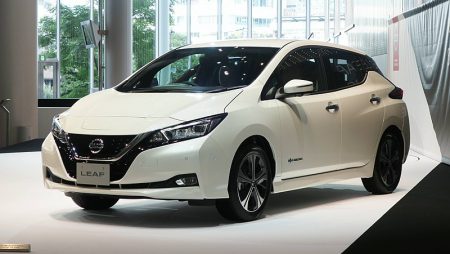This fall for only the second time in my life, I bought a new car.
It’s an emission-free Nissan Leaf. I named it “Greta.” Last night, I ran into a friend who has a Tesla all-electric vehicle (AEV) also named “Greta.” I’m now wondering how many AEVs there are in the world bearing the name of Swedish teenager Greta Thunberg.
I’m comfortable saying it was the extraordinary courage of this young woman who could be my granddaughter that drove my decision to go all-electric. “OK boomer,” I said to myself, “it’s your turn to help leave a habitable world for the next generation.

When Green Mountain Power held a get-acquainted session on AEVs for its customers, my wife and I drove up. They had most current models available there for customers to test drive and dealers to answer questions. I chose the Leaf and, thrilled that I fit in it, took it for a spin. It was a distinctly different experience … silence, no auto-shifting clunks. I learned that by using the eco-pedal, I didn’t need the brake pedal and could extend Greta’s range. I was hooked!
I’ve traveled 1,200 miles with Greta and my early experience with the car sent me searching for the encyclopedic instruction manual in the glove compartment. Like most consumers, I had read the FAQs and thought I knew it all. At the time of purchase, my key question was driving range between charges, a deciding factor for most potential buyers. The range is nominally 150 miles. My benchmark was the 88-mile round trip between my home in Hinesburg and Montpelier.
I set out on my first excursion with a full 152 miles on the meter. When I got to Montpelier, I expected to find it down 44 miles, but it was, in fact, down twice that — about 66 miles left to go before I needed a charge. This didn’t register, so before heading home, I pulled out the manual and read what I’d neglected to read before committing to the AEV.
Like all living things, her capacity is temperature-dependent. It was 10 above zero when I left the house and I had turned on the heat to make it worse as both heat and lights reduce Greta’s range. I risked the straight shot home and made it with 12 miles to go by turning off the heat and arrived home in a near cadaverous chill, scraping my frozen breath from the inside of the windshield with a credit card. Did this mean driving at night with no lights and no heat? Should I buy a flashlight and a wool blanket?
I also learned Greta’s batteries can be severely damaged by exposure to temperatures below minus 13. I’ve lived in Vermont for 70 years and have yet to experience a winter where it didn’t get colder than that. I remember a sunny, dry winter day in Lincoln at 38 below. Could the car even survive here, much less provide frigid transportation beyond a few miles from home? I began to worry.
But I’ve learned that by monitoring the temperature and my energy usage as I drive, using the eco-pedal to recharge as I drive, charging every night at home during off-peak hours, I can manage quite well and I haven’t eaten in a gas station in two months. I’m finding more and more charging stations, all searchable on my cellphone. Besides if it’s freezing cold and I have a round trip to Montpelier, a stop at Red Hen Bakery in Middlesex for a quick charge, a latte and a croissant isn’t much of a price to pay for doing my part. Sometimes, slowing life down enhances it.
Read more: VT Digger
It’s Time to Go Green!
If you would like to know more about Solar Panels and the PowerBanx range of home battery systems, and get a free instant quote, please complete our online form:

